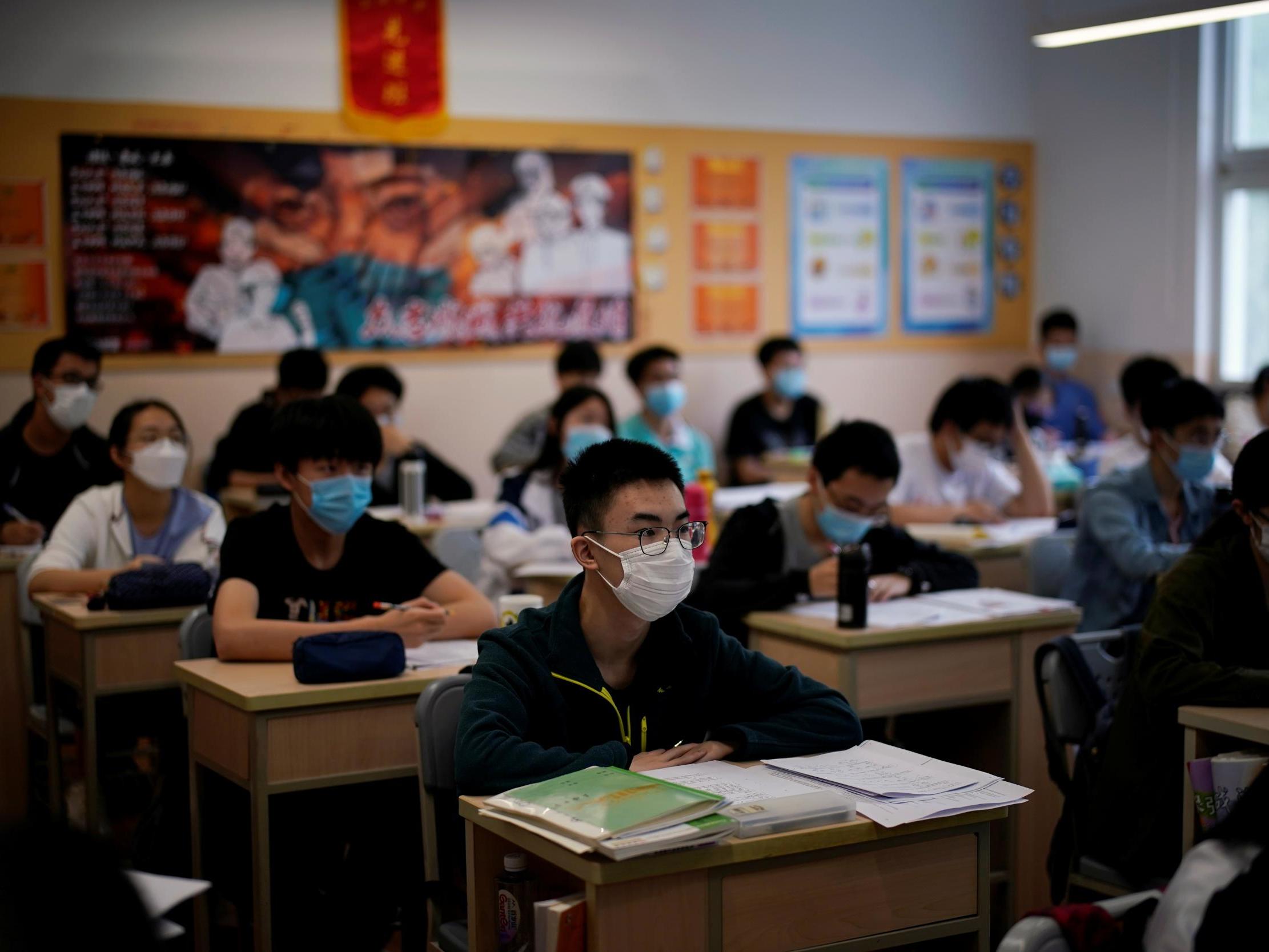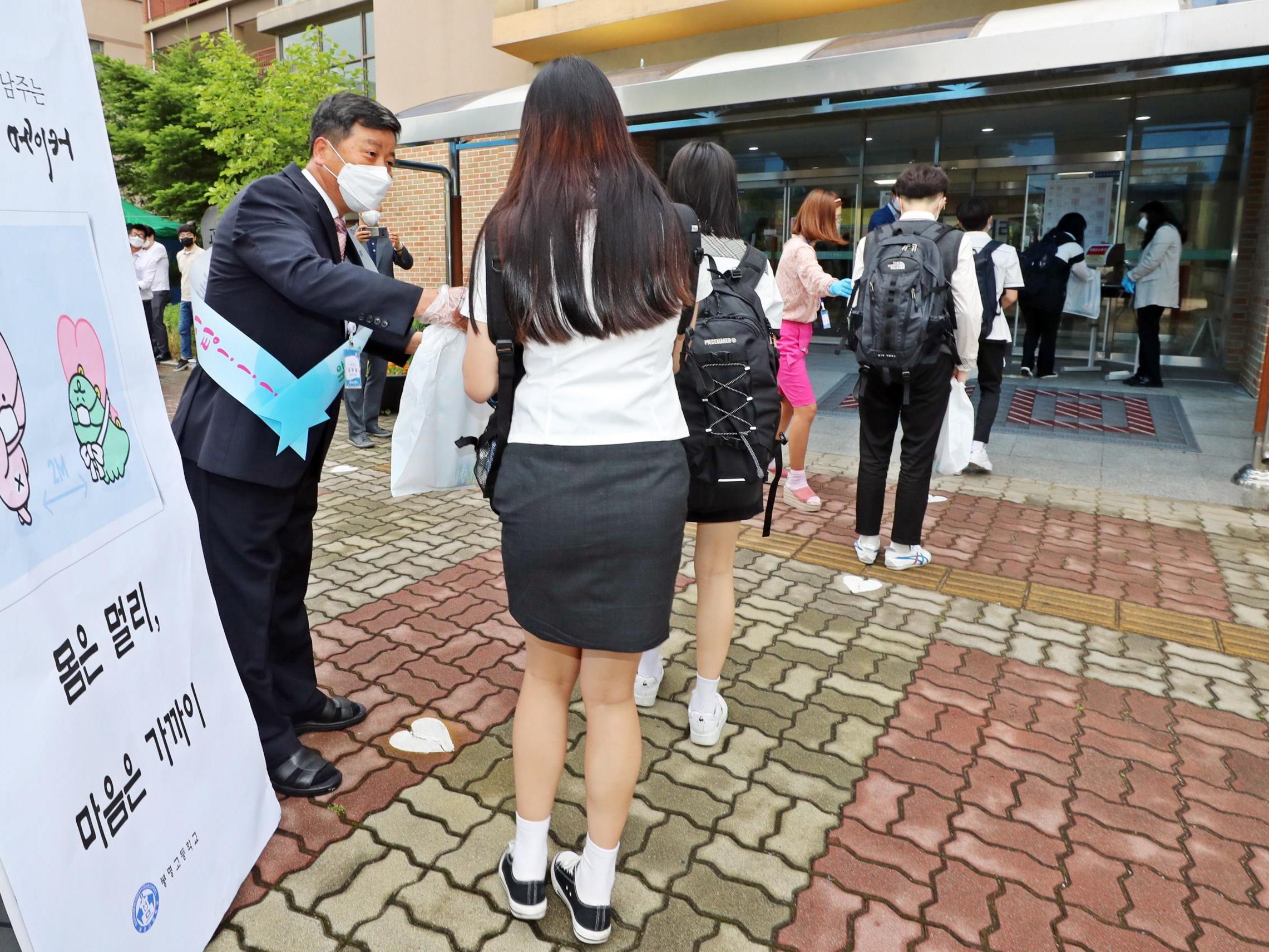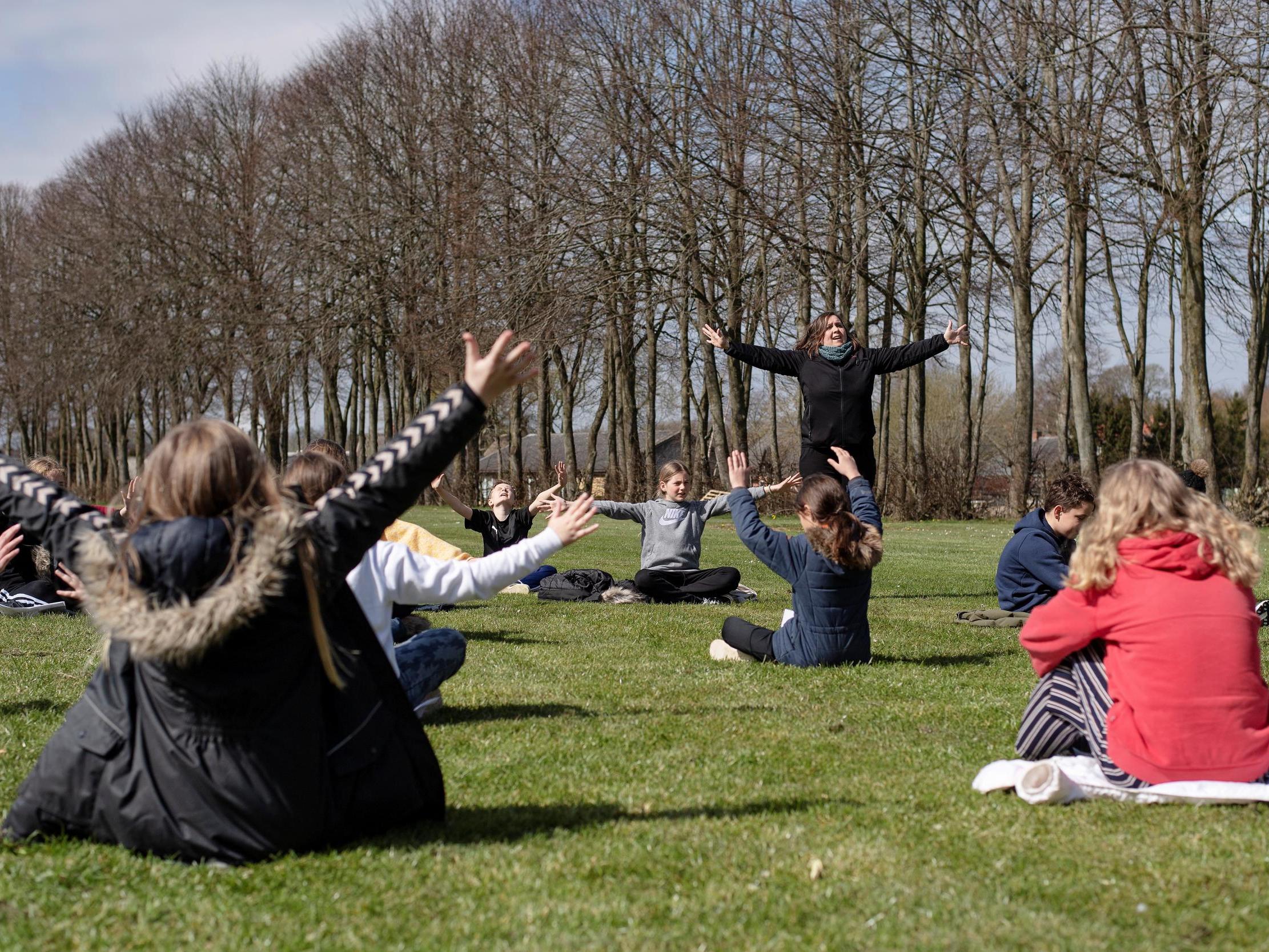Coronavirus: Are countries around the world sending children back to school?
Schools are reducing class sizes, shortening lessons and staggering arrival times

Your support helps us to tell the story
From reproductive rights to climate change to Big Tech, The Independent is on the ground when the story is developing. Whether it's investigating the financials of Elon Musk's pro-Trump PAC or producing our latest documentary, 'The A Word', which shines a light on the American women fighting for reproductive rights, we know how important it is to parse out the facts from the messaging.
At such a critical moment in US history, we need reporters on the ground. Your donation allows us to keep sending journalists to speak to both sides of the story.
The Independent is trusted by Americans across the entire political spectrum. And unlike many other quality news outlets, we choose not to lock Americans out of our reporting and analysis with paywalls. We believe quality journalism should be available to everyone, paid for by those who can afford it.
Your support makes all the difference.As the government continues to flip-flop over its plans to reopen schools in England, provoking uncertainty and anger among the education sector, other countries across the world have already succeeded in sending children back to class.
Earlier this week, education secretary Gavin Williamson admitted that not all pupils would be able to return before the summer, with some having to wait until September, despite initial aims to begin the phased reopening of all primary schools from 1 June.
In contrast, thousands of children in countries such as Denmark, Germany, France, South Korea and China have been back in class for weeks. Here, we take a look at what the rest of the world is doing:
China
Having passed through the worse of the crisis, China was one of the first countries to start reopening its schools.
In the far-western provinces, some have been opened since mid-March, though the vast majority started welcoming students back last month. Class sizes have been reduced, lessons shortened and arrival times staggered to limit the risk of transmission.
Schools in cities with large populations, such as Beijing and Shanghai, are running classes with a maximum of 20 students to allow social distancing. Pupils have also been told to walk or be driven to school by their parents, in order to avoid busy public transportation like the subways.
Teachers are taking students’ temperatures before they enter buildings while thermal scanners have been introduced in some schools; those with a fever are sent home.
South Korea
A country that has been credited with its rapid and effective Covid-19 response, South Korea began reopening its high schools last month. On 8 June, lower-level pupils started returning to school in phased steps.
Under new sanitation rules, students and teachers must wear masks except at mealtimes and clean their desks, which are spaced 1 metre apart and have been fitted with plastic partitions in some schools.
Like China, authorities in South Korea have turned to thermometers to help monitor the temperature of pupils and teachers. And if any student tests positive for the virus, the entire school is expected to switch to online classes for at least two weeks.
It has been far from straightforward though. More than 500 schools were last month forced to close just days after they had re-opened, due to a spike in cases in Seoul and its surrounding metropolitan area.

Germany
With responsibility for education devolved to the country’s 16 federal states, some regions have been moving quicker than others in opening schools.
In general, younger students and those with exams to sit have been prioritised in returning to class. Schools in some states have been opened since 27 April to allow pupils to take their tests.
To reduce the risk of transmission, class sizes have been cut in half, one-way systems enforced in corridors, and lunch breaks staggered.
Many states are aiming to have all classes in schools and kindergartens return before the start of the summer break, which starts as early as 22 June in some parts of the country.
Denmark
Denmark was the first European country to reopen primary schools and kindergartens, doing so in mid-April. Secondary students started returning to class on 18 May.
Younger pupils are expected to remain in “protective bubbles”, which keeps them from mixing with other teachers and groups of children. They use different entrances to their fellow pupils and must wash their hands at least every two hours. Outside teaching has also been implemented where possible.
Christian Wejse, an associate professor in the Department of Infectious Diseases at Aarhus University Hospital, said the country had not seen an increase in the rate of transmission after schools were reopened.

France
Since the country’s lockdown was lifted on 11 May, 40,000 primary schools have reopened, along with some secondary schools. So far, around one in five primary school pupils has returned to class. Priority has been given to the children of key workers.
Teachers and children over 11 are expected to wear masks and class sizes have been limited to 15 pupils. Schools in the worst-affected regions of France, such as Paris, remain closed.
Others
Sweden: In keeping with country’s soft-touch approach to lockdown, schools have remained open during the pandemic. Authorities have relied on social distancing and hygiene measures to reduce the spread of infection instead.
India: The government is planning to reopen the country’s schools and colleges in a phased manner after 15 August. As part of plans that are being formulated by officials, India’s 270 million students may be required to attend classes on alternative days.
Israel: Over 20 more schools were closed earlier this month after the country recorded the largest single day rise in infections. According to the Education Ministry, 87 schools and daycares have now been closed to stem the spread of the virus.
South Africa: Students in their final years of primary and secondary school started returning to class on 9 June, after an initial delay to the restart date amid teachers’ concerns there was a shortage of sufficient masks and gloves.
Join our commenting forum
Join thought-provoking conversations, follow other Independent readers and see their replies
Comments